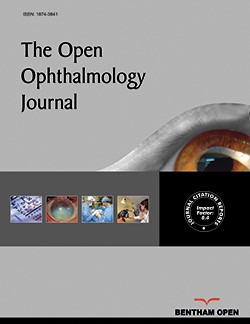All published articles of this journal are available on ScienceDirect.
Evaluation of Outcomes and Regression after Neovascularization Treatment for Non-type 1 Retinopathy of Prematurity
Abstract
Introduction:
To study the unfavorable outcomes and regression after neovascularization treatment for non-type 1 retinopathy of prematurity (ROP) in a tertiary care facility in Thailand.
Methods:
A retrospective study was done of all infants undergoing screening and treatment for ROP at a tertiary referral center between July 2018 and June 2021 with follow-up for 60 weeks postmenstrual ages (PMA). The outcomes measured were unfavorable outcomes, including macula involving posterior retinal folds, macula involving retinal detachment, retrolental cicatrix formation, or a mass obscuring the view of the posterior pole, and the regression of ROP after treatment. The infants received neovascularization treatment (stage 3 ROP) within 72 h of diagnosis. The study also compared the unfavorable outcomes and regression between neovascularization in type 1 ROP and non-type 1 ROP subgroups.
Results:
There were 58 eyes of 31 infants that received neovascularization treatment that were included in the study. Of these 58 eyes, 41 had non-type 1 ROP, and 17 had type 1 ROP. 92.68% of the eyes treated for non-type 1 ROP had stage 3 ROP in zone II with pre-plus disease and 74.47% of the eyes treated for type 1 ROP had stage 3 ROP in zone II with plus disease. The mean gestational age and birth weight of the enrolled infants were 28.48 ± 1.99 weeks and 1165.32 ± 394.57 g, respectively. Unfavorable outcomes after neovascularization treatment occurred in three eyes (17.65%) in the type 1 ROP group, but there were no unfavorable outcomes in the non-type 1 ROP group (p=0.022); these three eyes were treated with laser indirect ophthalmoscopy (LIO) combined with Intravitreal bevacizumab (IVB). The non-type 1 ROP treated with laser LIO alone group had 100% regression, whereas type 1 ROP treated with LIO or combined LIO and IVT bevacizumab group had 82.35% regression. Progression after treatment without regression occurred in five eyes (29.41%) with type 1 ROP, but no progression occurred in eyes with non-type 1 ROP (p=0.001).
Conclusion:
Neovascularization treatment in non-type 1 ROP is useful for preventing unfavorable outcomes and achieving the regression of neovascularization, especially for diseases less severe than type 1 ROP. Moreover, neovascularization treatment in non-type 1 ROP can reduce the progression of ROP disease.


